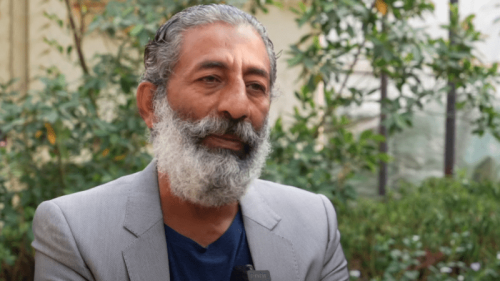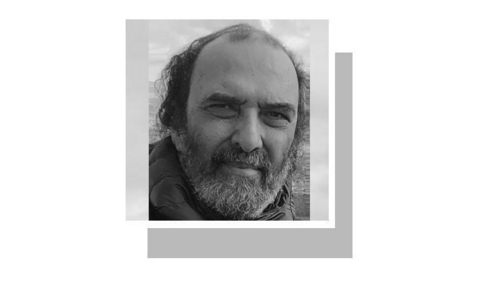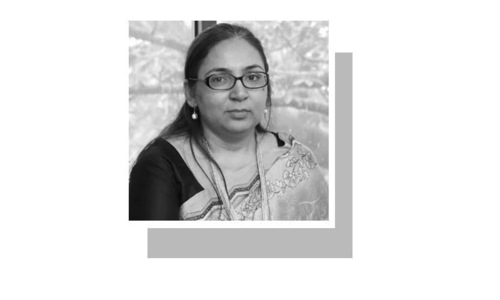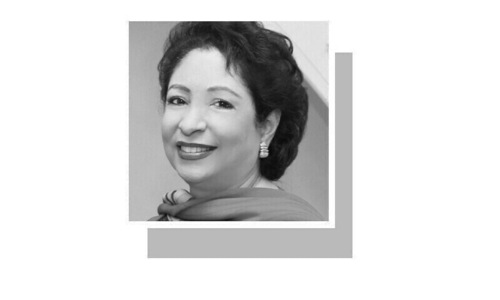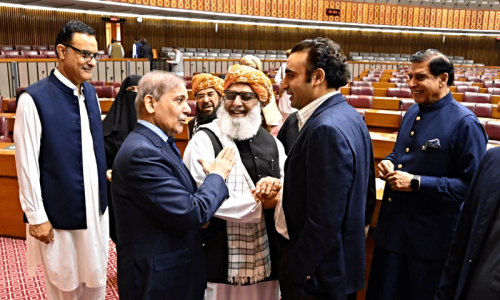HISTORICAL data reveals that Pakistan’s GDP exhibits booms followed by sharp busts. In a now-familiar pattern, periods of high economic growth (booms) have almost always led to a widening of the trade deficit and an increase in foreign liabilities.
A rapid dwindling of foreign exchange reserves simultaneously increases the probability of a balance of payment crisis. To prevent a full-blown currency crisis and regain macroeconomic stability, the central bank raises interest rates and seeks multilateral support to shore up its foreign exchange reserves.
While raising interest rates protects the currency, it curtails investment and raises debt obligations, especially those denominated in local currency. This has a contractionary effect on the economy, as it reduces both growth and employment, thereby prompting a period of low- high economic growth (bust). Multiple boom-bust cycles have been observed in each of the last six decades.
Does the current macroeconomic scenario indicate a high risk of a crisis? If so, what are the policy lessons to prevent such an episode from occurring in the future?
Recent data on Pakistan’s current account reveals worryingly similar patterns. The trade deficit has widened considerably during a period where economic growth has averaged around the five per cent mark.
At the same time, gross external financing requirements have steadily increased to a projected $24.5 billion for fiscal year 2017-18 from $6.7n in 2011-12. Reserves have gradually depleted and now stand to cover less than three months worth of imports.
Does the current macroeconomic scenario indicate a high risk of a similar crisis? If so, what are the policy lessons to prevent such an episode from occurring in the future?
To analyse this issue, one needs to dig deeper into the current trade deficit. During the past five years, Pakistan’s exports of raw cotton, cotton fabrics, cotton yarn and fabrics, woollen carpets and rugs, leather products, and rice have all declined significantly. These comprise more than half of the total export volume.
On the other hand, manufactured goods, chemicals and food imports have steadily risen up. Perhaps the most striking increase is observed in machinery and transport equipment imports, which has doubled in volume since 2011-2012.
The key argument often presented to defend the trade deficit rests in the fact that it may, at present, generate a current account deficit but promises to add to the industries’ productive capacity and increase future exports. Thus, the present trade-deficit will be reversed when the economy’s output capacity increases.
However, this argument rests on the rather strong assumption that the country possesses the ability to absorb its imports and produce goods that are export-oriented.
In this regard, Pakistan’s export base is too narrow to fully reconcile the gains from importing the high-valued machinery — indeed, the export base needs to be sufficiently diverse in both its product variety and the ability to produce high value-added products that can generate current account surpluses and sustain economic growth.
This is further reinforced when looking at the type of goods that currently comprise the major bulk of the exports and which includes cotton, leather and rice. Apart from being low-value added, these goods have faced increasing global competition from countries such as Bangladesh, and suffered due to a fall in international demand, especially from European countries.
On the policy front, Pakistan’s economy requires what Dani Rodrik, a professor at the John F. Kennedy School of Government at Harvard University, terms structural transformation, that is, a change in the pattern of what an economy produces, and in particular, what it exports.
To do so, the industry has to move up the value chain and increase both the complexity and the diversity of its products. This requires investment to replace outdated technology and boost labour productivity, integration into global-value chains as well as a continuous supply of a high skilled labour force of which a proportion engages in research and development.
In the recent decade, entrepreneurship has also offered an alternative mechanism which has unlimited transformational potential but requires mobilisation and stable government policy.
However, the unfavourable tax regime, the high cost of doing business, energy constraints, underdeveloped financial markets as well as weak infrastructure are all preventing Pakistan from fully utilising this capacity.
While CPEC should attend to the infrastructural and energy needs, policymakers need to embark on streamlining and reforming other binding constraints restricting the export potential.
Moreover, examples of previous successful structural reform programmes across countries seem to have almost always benefited from some demand-side impetus. On this front, there is little doubt that good macroeconomic policy such as prudent fiscal policy and appropriately managing exchange rates and interest rates play a major role.
With respect to fiscal space; it remains to be seen whether devaluation will reverse the trajectory of exports.
It is no doubt, however, that without appropriate structural reforms, exchange rate devaluation may only bring temporary relief, but at the same time, threaten stability via increased import prices and inflationary pressures.
If the depreciation is complemented by targeted structural reforms, a sustained period of strong growth is more likely to follow.
— The writer is an assistant professor of economics, at the Lahore University of Management Sciences
Published in Dawn, The Business and Finance Weekly, June 11th, 2018
























